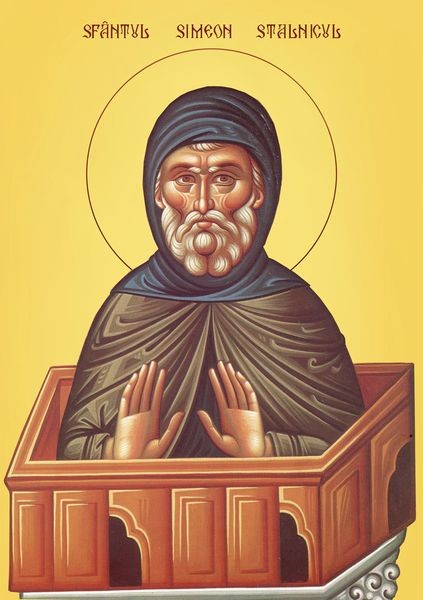Saint David, a nephew of holy King Stephen, in the world had the name Demetrius. He built a monastery at Brodarova, at the River Lima, and there he received monastic tonsure with the name David and lived an ascetical life to the end of his days.
Orthodox theology
Saint Vladislav of Serbia
Holy King Vladislav of Serbia was the son of holy King Stephen, and he reigned for seven years. He was noted for his virtue and charity towards the poor, the vagrant and the misfortunate, and he built a monastery at Milesheva, where he died in 1239 and was buried.
Hidden Fire: Orthodox Perspectives On Yoga
Do not be yoked together with unbelievers. For what do righteousness and wickedness have in common? Or what fellowship can light have with darkness? What harmony is there between Christ and Belial? What does a believer have in common with an unbeliever? What agreement is there between the temple of God and idols?
2 Corinthians 6:14–18 NIV
I was raised Roman Catholic. I loved prayer. Walks through woods, playing in creeks, running through the vast fields of the imagination. These were like prayer for me: the silence, the stillness, the hesychia children find themselves in almost by nature. I didn't always stay in this prayerful place. But I recognized it. And I took it for granted, as a simple activity within the heart.
Venerable Simeon Stylites
 September 14 (Sept.1 old calendar).
September 14 (Sept.1 old calendar).
Saint Simeon was born into a poor family living in the Antioch area of Syria in the middle of the 4th century. Once when he was in church listening to the singing of Beatitudes (Mat. 5:3-16), he felt a zealous aspiring for righteousness. Simeon began to pray ardently asking God for the way to attain true righteousness. Soon he had a dream in which he was digging the ground as if he were building something. A voice told him, "Dig deeper." Simeon started digging harder. Thinking that the pit he made is deep enough he stopped digging, but the voice told him to dig still deeper. The same instruction was repeated several times. Simeon began digging unceasingly till the mysterious voice stopped him saying, "Enough! And now, if you are willing to build, do so and be hard working as no success is achieved without toil."
The Dormition of the Most-holy Theotokos
 The Lord Who, on Mount Sinai, gave the Fifth Commandment, Honor thy father and thy mother, showed by His own example how one should respect one’s parents.
The Lord Who, on Mount Sinai, gave the Fifth Commandment, Honor thy father and thy mother, showed by His own example how one should respect one’s parents.
Hanging on the Cross in agony, He remembered His Mother, and indicating the Apostle John He said to her: Woman, behold thy son. After that, He said to John: Behold thy mother. And so, providing for His Mother, He breathed His last. John had a home on Mount Zion, in Jerusalem, in which the Theotokos then lived. She dwelt there to the end of her days on earth. By her prayers, kind guidance, meekness and patience, she greatly assisted her Son’s apostles. She spent most of her remaining time on earth in Jerusalem, often visiting those places that reminded her of the great events and of the great works of her Son. She especially visited Golgotha, Bethlehem, and the Mount of Olives. Of her few distant journeys, her visit to St. Ignatius the God-bearer in Antioch is recorded; as is her visit to Lazarus (whom our Lord resurrected on the fourth day), the Bishop of Cyprus. She also visited Mount Athos, which she blessed; and she stayed in Ephesus with St. John the Evangelist during the time of the great persecution of Christians in Jerusalem.
The Life of Our Holy Father Saint Herman of Alaska
 Commemorated November 15, December 13/25, and July 27/August 8
Commemorated November 15, December 13/25, and July 27/August 8
(1751–1836)
The following Life is based on the original Valaam Life commissioned in 1864 by Abbot Damascene, and incorporates changes based on recent research.
Saint Herman of Alaska was born in 1751 in a village of the province of Voronezh, Russia, into a very devout peasant family. His name before monasticism was Yegor Ivanovich Popov. It is known that one of his relatives ended her days as a nun of the well-known Monastery of the Passion in Moscow. From his early youth Yegor was a pious boy, and he made several pilgrimages to the Sarov Monastery. During his childhood he stayed for a time in the cell of the elder and asceticVarlaam of Sarov (†1764), the spiritual father of Hieromonk Nazarius, the future abbot of Valaam Monastery. Little is known ofthe early period of Fr. Herman’s life. A story about him was told by his friend, monk Theophan.[1] “Fr. Herman (he is now in America) at a young age lived in the wilderness with Fr. Varlaam. Fr. Varlaam once departed for a short time, leaving the youngster—he was twelve years old—alone. It happened that some people gathering mushrooms in the forest became lost and came across the cell of the desert dwellers. When Yegor emerged to meet them, they were frightened by him—so unusual did his presence in the forest seem to them.”[2]

